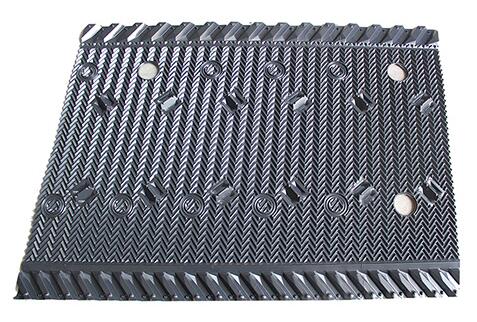Unveiling the Significant Effects of Cooling Tower Fill on Industrial Processes
Cooling towers play a crucial role in various industries, facilitating the dissipation of excess heat generated during industrial processes. Among the key components of a cooling tower, the fill material holds a vital position. This article explores the effects of cooling tower fill on enhancing efficiency and performance in industrial operations.
Efficient Heat Transfer
The cooling tower fill is responsible for maximizing the contact between hot water from the industrial process and the air stream within the tower. Its unique design, often consisting of honeycomb-like structures or corrugated sheets, increases the surface area available for heat transfer. This increased surface area facilitates efficient heat exchange, allowing for effective cooling of the water, even in high-temperature applications. As a result, the cooling tower fills significantly enhances the overall cooling efficiency and performance of the system.
Water Distribution and Uniformity
An equally important effect of the cooling tower fill is its role in water distribution. The fill material is strategically positioned to ensure uniform water distribution across the entire cooling tower. It creates a maze-like path for the water to flow through, ensuring an even distribution over the fill surface. This uniformity prevents localized hot spots and ensures that every part of the fill comes into contact with the air, maximizing heat dissipation. Proper water distribution also minimizes the risk of scaling, fouling, and biological growth, leading to improved system performance and reduced maintenance requirements.
Airflow Enhancement
The design and configuration of the cooling tower fill influence the airflow pattern within the tower. By providing a structured surface, the fill material promotes air turbulence and enhances the mixing of hot water and air. This turbulent airflow maximizes the contact time between the water droplets and the air, optimizing heat transfer. Additionally, the fill material creates a large contact area for the air to pass through, increasing the tower's airflow capacity. Consequently, the cooling tower fill improves the tower's ability to remove heat efficiently, resulting in enhanced cooling performance.
Energy Efficiency
Efficiency in energy consumption is a critical consideration for any industrial operation. The cooling tower fill plays a significant role in improving energy efficiency. By enhancing heat transfer, water distribution, and airflow, the fill material allows the cooling tower to operate at lower water and air temperatures. This reduces the energy required to achieve the desired cooling effect, leading to substantial energy savings. Moreover, improved heat transfer efficiency minimizes the need for oversized cooling systems, further optimizing energy consumption. The utilization of efficient cooling tower fill translates into tangible economic and environmental benefits for industries.
Conclusion
The cooling tower fill is a vital component that significantly impacts the efficiency and performance of cooling towers in industrial processes. Its role in promoting efficient heat transfer, uniform water distribution, enhanced airflow, and improved energy efficiency cannot be understated. By investing in high-quality fill materials, industries can unlock substantial benefits, including increased productivity, reduced maintenance costs, and minimized environmental impact. We are a cooling tower fill supplier. If you are interested in our products, please contact us now!


评论
发表评论